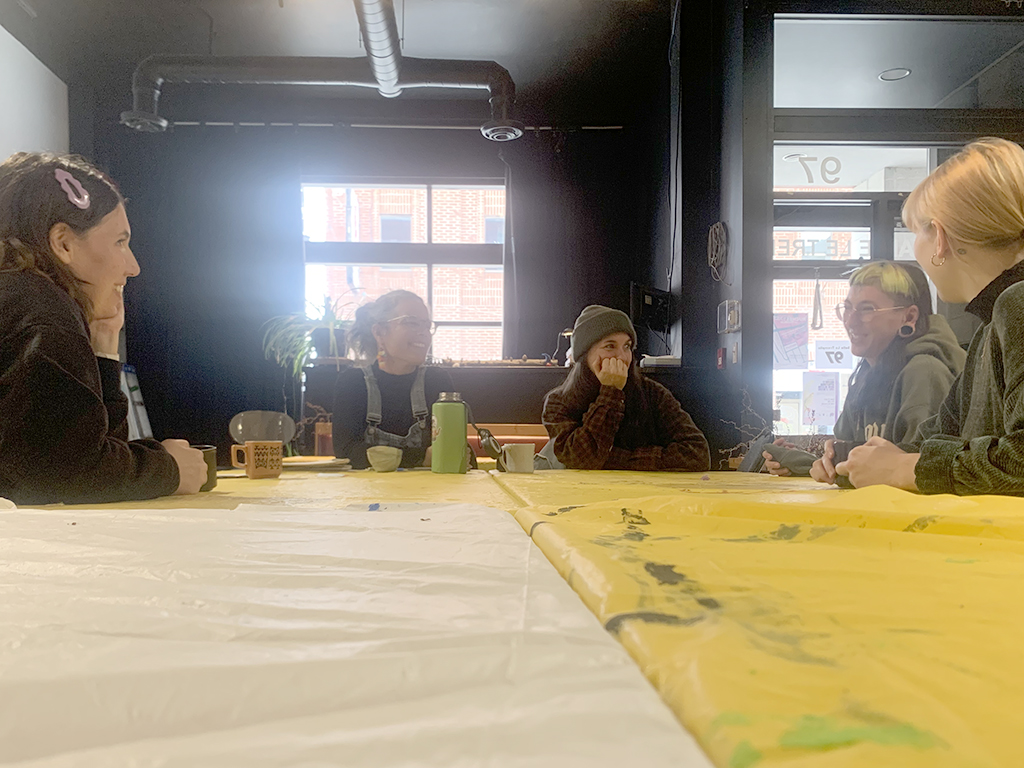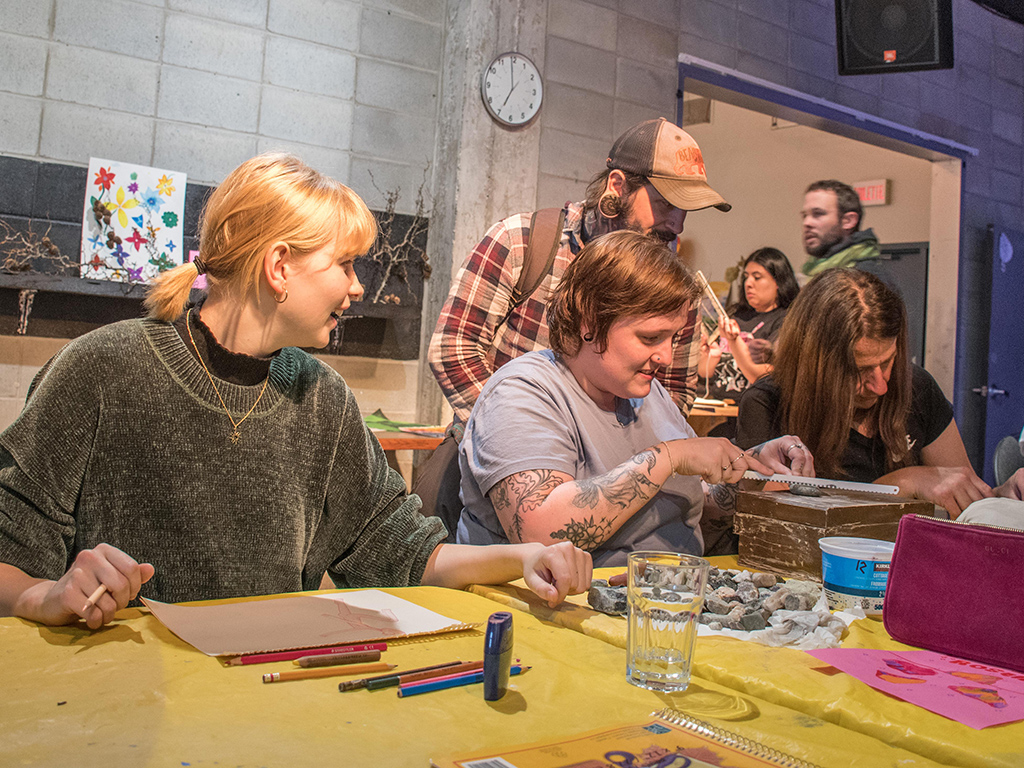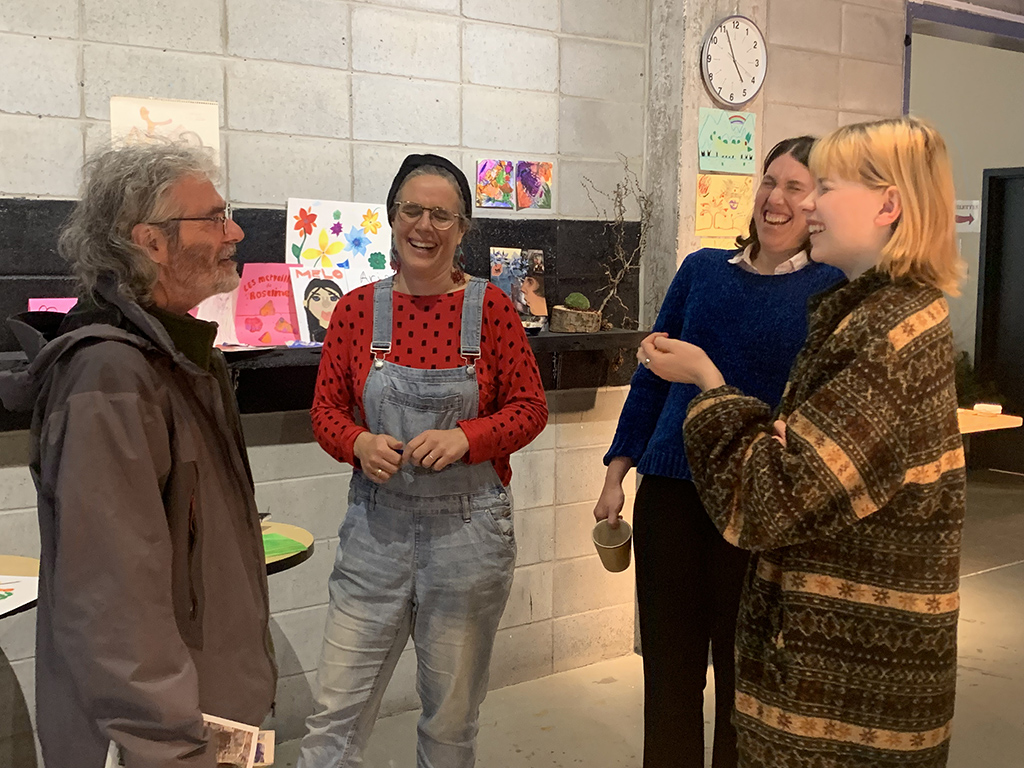Camila Vásquez –
May, 2024
Walk slowly, be observant, have time, be available, expect nothing from the other, offer presence, have no authority (nor desire it), no agenda (busy or not), no ideas of what would be best. To be in dialogue, to help lower the tension and validate the person. That’s how Coalition sherbrookoise pour le travail de rue street workers Stéphanie Roy and Alisson Lapointe introduced their work to the Tremplin team and artists Lysanne Picard and Anabelle Brochu.
They are “citizens like no others” who are there, on the street, waiting to be noticed before letting the world come to them. This work of patience, of avoiding putting pressure on themselves (of wanting to be productive or efficient), allows that little by little, step by step, a bond is created. A first nod or a furtive glance is a victory (if this term can be relevant in a paradigm where the simple notion of success is not pursued). And once a relationship has been established and it is possible to provide support, don’t make yourself indispensable, taking care to empathize without falling into sympathy. This is the posture they work to cultivate day after day, while coming face to face with discrimination, suffering and powerlessness.
Through this conversation, Tremplin 16-30 team welcomed artists Anabelle Brochu and Lysanne Picard into their milieu. Milène Richer, social art project manager at Tremplin and in charge of the residency, and the street workers tell us about the Centro’s context: the daily journeys of people experiencing homelessness, or at risk of becoming homeless, who usually circulate between Chaudronnée de l’Estrie, Partage St-François, city parks and the Macadam bus of Coalition sherbrookoise pour le travail de rue; community police officers, encampments tolerated by the City, loitering tickets, the effects of gentrification on the street Wellington Sud, both on the immediate environment and in terms of the housing crisis. Discussing the urban reality that revolves around Tremplin raises questions and awakens the spirits of everyone around the table.
The residency’s first art hive takes place shortly afterwards. The artists, inspired by this approach to intervention (both counter-current and necessary) and relieved to have the luxury of time themselves, slowly begin to infiltrate the ephemeral community that participates in Tremplin’s weekly art hives. Carried along by the joy and effervescence of this collective creative space, they initiate conversations, start projects and observe those of others.
A week later, we find ourselves once again seated on the sofas in the Tremplin lounge. Some faces are starting to look familiar. Residents we’d met at the art hives or at the community supper (a monthly gathering of the Tremplin’s community to which we’d been generously invited) approach us. One resident, who has been living there for a few years, moves in with us and stays for a good part of our meeting. Community support worker François Danis and Milène made the most of her presence to give her a voice. She describes the organization, the people who live there, the challenges she and her peers face, and the contribution Tremplin makes to everyone’s quality of life. Her transparency is deeply moving. And the complicity with François and Milène is palpable. I’m touched by this level of horizontal exchange, and it shows just how out of the ordinary the way Le Tremplin runs. The support offered to young people is aimed at developing a sense of belonging to society, at a time when most of them have severed ties with their family circles and were living in isolation before their arrival. To achieve this, four areas of intervention are put forward: Social mixing, Contact with nature, Healthy lifestyle habits and Contact with the arts: “We’ll start by belonging to Tremplin and then become part of humanity.” The team’s commitment enables residents to have meaningful relationships, get to know each other better and find their place in a world that can seem hostile, not very open to their realities and those of many others.
Images
1. Meeting between artists, Tremplin and streetworkers from the Coalition sherbrookoise pour le travail de rue.
2. First art hive of the Ni un, ni deux residency. Photo: Tremplin 16-30
3. First art hive, the Ni un, ni deux residency. Photo: Tremplin 16-30
4. Meeting between the artists and Tremplin’s intervention team.
5. Illustrations of Tremplin’s four axes of intervention, created by local artists, and photos of the team.





